Discover the career path of Marie Curie, from the first major opportunity to industry-changing achievements.
Marie Curie, born Maria Skłodowska in Poland, was a pioneering physicist and chemist renowned for her groundbreaking research on radioactivity. Working primarily in France, she was the first woman to win a Nobel Prize, the first person and only woman to win the Nobel Prize twice, and the only person to win the Nobel Prize in two different scientific fields (Physics and Chemistry). Curie's work led to the discovery of polonium and radium, and she developed techniques for isolating radioactive isotopes. Her research was crucial in developing treatments for cancer. She died in 1934 from aplastic anemia likely caused by her long-term exposure to radiation.
1900: First Woman Faculty Member at École Normale Supérieure
In 1900, Marie Curie became the first woman faculty member at the École Normale Supérieure, marking a significant achievement for women in academia. Her husband joined the faculty of the University of Paris in the same year.
1902: Publication on Radium's Effect on Cells
Between 1898 and 1902, the Curies published a total of 32 scientific papers. In 1902, they announced that when exposed to radium, diseased, tumour-forming cells were destroyed faster than healthy cells.
1902: Separation of Radium Chloride
In 1902, the Curies separated one-tenth of a gram of radium chloride from a tonne of pitchblende, marking a significant step in isolating radium.
June 1903: Curie Awarded Doctorate from University of Paris
In June 1903, Marie Curie was awarded her doctorate from the University of Paris, supervised by Gabriel Lippmann.
December 1903: Nobel Prize in Physics Awarded
In December 1903, the Royal Swedish Academy of Sciences awarded Pierre Curie, Marie Curie, and Henri Becquerel the Nobel Prize in Physics for their research on radiation phenomena. Marie Curie was the first woman to be awarded a Nobel Prize.
1903: Nobel Prize in Physics
In 1903, Marie Curie, along with her husband Pierre Curie and Henri Becquerel, was awarded the Nobel Prize in Physics for their pioneering work on radioactivity. Marie Curie was the first woman to ever win a Nobel Prize.
1905: Curies' Nobel Lecture
In 1905, the Curies traveled to Stockholm to deliver their Nobel lecture. The award money allowed them to hire their first laboratory assistant.
May 1906: Marie Curie Offered Pierre's Professorship
In May 1906, following Pierre Curie's death, the physics department of the University of Paris offered Marie Curie his chair. She accepted, becoming the first woman to hold a professorship at the University of Paris.
1906: University of Paris Professorship
Following the award of the Nobel Prize in 1905, and galvanised by an offer from the University of Geneva, the University of Paris gave Pierre Curie a professorship and the chair of physics in 1906.
1906: First Woman Professor at the University of Paris
In 1906, Marie Curie became the first woman to hold a professorship at the University of Paris, marking a significant milestone in her career and for women in academia.
1906: Death of Pierre Curie
In 1906, Pierre Curie died in a Paris street accident. Following his death, Marie took over his professorship at the University of Paris.
1909: Initiative for Creating the Radium Institute
In 1909, Pierre Paul Émile Roux, director of the Pasteur Institute, initiated the creation of the Radium Institute (now Curie Institute) after being disappointed by the University of Paris's lack of support for Curie's laboratory.
1910: Isolation of Radium and Definition of the Curie
In 1910, Marie Curie succeeded in isolating radium and defined an international standard for radioactive emissions, which was eventually named the curie in honor of her and Pierre Curie.
1910: Isolation of Pure Radium Metal
In 1910, Marie Curie successfully isolated pure radium metal, a major achievement in her research and the study of radioactivity.
1911: Second Nobel Prize
Despite the Langevin scandal, in 1911, the Royal Swedish Academy of Sciences awarded Marie Curie her second Nobel Prize, this time in Chemistry, for her discovery of the elements radium and polonium. The chair of the Nobel committee, Svante Arrhenius, attempted to prevent her attendance at the official ceremony due to her affair with Langevin. Curie replied that she would be present at the ceremony, because "the prize has been given to her for her discovery of polonium and radium" and that "there is no relation between her scientific work and the facts of her private life".
1911: Nobel Prize in Chemistry
In 1911, Marie Curie won the Nobel Prize in Chemistry for her discovery of the elements polonium and radium, solidifying her legacy as a pioneering scientist. She used techniques she invented for isolating radioactive isotopes.
1912: Declined directorship in Warsaw
In 1912, the Warsaw Scientific Society offered Marie Curie the directorship of a new laboratory in Warsaw, but she declined, focusing on the developing Radium Institute.
1914: Radium Institute built
In 1914, Curie's second Nobel Prize helped her to persuade the French government to support the construction of the Radium Institute where research was conducted in chemistry, physics, and medicine.
1915: Produced hollow needles
In 1915, Marie Curie produced hollow needles containing "radium emanation", later identified as radon, to be used for sterilising infected tissue.
1919: Published Radiology in War
In 1919, after the war, Marie Curie summarized her wartime experiences in a book, Radiology in War.
1920: Foundation of the Curie Institute in Paris
In 1920, Marie Curie founded the Curie Institute in Paris, a major medical research center that continues to operate today.
1921: Fundraising tour of the United States
In 1921, Marie Curie toured the United States to raise funds for research on radium. Marie Mattingly Meloney helped publicise her trip.
August 1922: Member of League of Nations Committee
In August 1922, Marie Curie became a member of the League of Nations' newly created International Committee on Intellectual Cooperation.
1923: Wrote biography of Pierre Curie
In 1923, Marie Curie wrote a biography of her late husband, titled Pierre Curie.
1929: Second American tour
In 1929, Marie Curie's second American tour succeeded in equipping the Warsaw Radium Institute with radium.
1930: Elected to International Atomic Weights Committee
In 1930, Marie Curie was elected to the International Atomic Weights Committee, on which she served until her death.
1932: Foundation of the Curie Institute in Warsaw
In 1932, Marie Curie founded the Curie Institute in Warsaw, which, like its Paris counterpart, remains a significant medical research center.
1932: Warsaw Radium Institute Opened
In 1932, the Warsaw Radium Institute opened, with Marie Curie's sister Bronisława as its director.
1934: Sat on the International Committee on Intellectual Cooperation until 1934
Marie Curie sat on the League of Nations' International Committee on Intellectual Cooperation until 1934.
Mentioned in this timeline
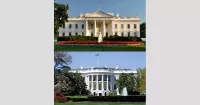
The White House located at Pennsylvania Avenue NW in Washington...
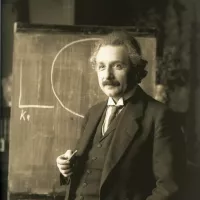
Albert Einstein - was a German-born theoretical physicist renowned for...
France officially the French Republic is primarily located in Western...
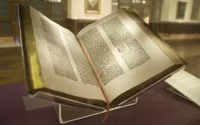
Books are a means of storing information as text or...
Spain officially the Kingdom of Spain is located in Southern...

The horse scientifically known as Equus ferus caballus is a...
Trending

8 months ago Josh Jacobs infuriated by Raiders' Chiefs logo dance; former player recalls backfire.
1 month ago SpaceX Falcon 9 Launches Starlink Satellites from Cape Canaveral on 150th Mission.
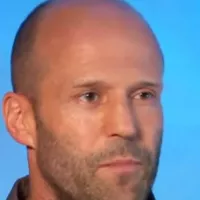
1 month ago Jason Statham's 'A Working Man' achieves streaming success despite mixed reviews, replacing The Beekeeper.

3 months ago Zay Flowers Likely to Play Sunday Despite Injury Concerns; Fantasy Projections Assessed
The Lightning Panthers rivalry known as the Battle of Florida or the Battle of the Sunshine State is a professional...
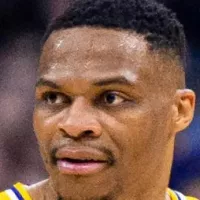
3 months ago Rockets face challenges with VanVleet's injury, consider trade targets for replacement.
Popular

XXXTentacion born Jahseh Dwayne Ricardo Onfroy was a controversial yet...

Stranger Things created by the Duffer Brothers is a popular...

Candace Owens is an American conservative political commentator and author...
The Kennedy Center Honors are annual awards recognizing individuals and...
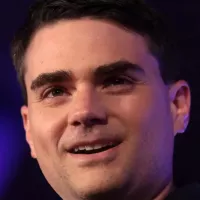
Ben Shapiro is a prominent American conservative political commentator media...

William Franklin Graham III commonly known as Franklin Graham is...


